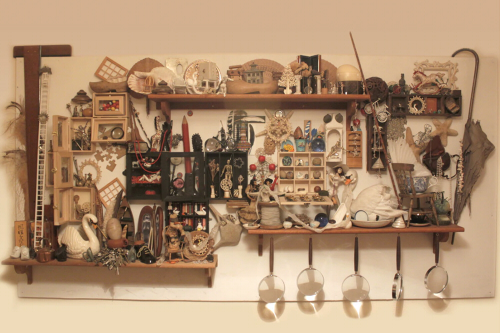4 Types of Clutter that Stop You from Achieving Your Purpose
Stephanie Vozza
Most people identify clutter as a tangible entity. It’s that pile of papers, books, and objects sitting on your desk waiting to be put away. While the physical stuff is obvious, most of our clutter is invisible, says Barbara Hemphill, author of Less Clutter More Life and founder of the Productive Environment Institute.
“There are four types of clutter: paper, digital, emotional, and spiritual,” she says. “Physical and digital clutter are symptoms of emotional and spiritual clutter.”
Years ago, Hemphill started as a professional organizer. “I realized that every time there was a somebody who was a real packrat or hoarder, they had trouble letting go,” she says. “If I asked enough questions, I would inevitably find out they had experienced a severe emotional loss that would leave them physically paralyzed when it came to clearing up the clutter. It wasn’t a paper problem; it was an emotional problem.”
Spiritual clutter also gets in the way by representing our hopes, dreams, and fears. “I believe God created every person for a specific purpose, for a specific work,” says Hemphill. “We are to not only accomplish our work, but we are to enjoy our life. When you know your purpose, then it’s easy to know what’s clutter.”
Hemphill suggests asking yourself the question, “Does this [physical or digital thing] help me accomplish my work or have the life I want?” “If it doesn’t, by definition, it’s clutter,” she says. “Clutter prevents you from reaching your purpose, but getting rid of clutter helps you reveal your purpose.”
If you’re not yet sure of your purpose, Hemphill says focus instead on what you know it isn’t. “Start with what you know you don’t want,” she says. “It’s like peeling the layers of an onion.”

THREE STEPS FOR GETTING RID OF CLUTTER
Hemphill says that three things contribute to clutter: lack of focus, lack of systems, and lack of support. To find your focus, Hemphill you must identify what you want to accomplish before you start working.
“Many people are just not focused,” she says. “They’re not… starting on the most important thing to accomplish that day, and getting it done before they do anything else. Instead, they’re cleaning out their email or doing something [else], rather than focusing on what’s important.”
To find your focus, you have to identify the most important tasks and understand why they’re important. Then make a plan to accomplish those before you move to work that isn’t as critical.
Focusing needs systems, and the second step is to create them. Hemphill says it’s not enough to make a decision; you have to have a way to implement it. When you set up your office and desk, identify what you need in your system. There isn’t a one-size-fits-all approach. For example, Hemphill uses a system called the “Magic Six,” which identifies the six things you need within reach of where you work to handle papers and projects.
Finally, people need to work together to live shared vision and values. At work, that requires the proper support. “The way a company succeeds is to make sure that the employees are working the way they were meant to work,” says Hemphill. “Organizing and productivity is an art, and it has to start at the top.”
Hemphill’s productivity consulting company helps organizations provide support through a five-step process: state your vision, identify your obstacles, commit your resources, design and execute your plan, and sustain your success.
“Notice that the common word is all in all those is ‘your,” she says. “Those five steps can be used to solve any problem, both for the individual and for the company.”
At its core, Hemphill says clutter is delayed decisions. “Left unaddressed, clutter presents risks, including the unnecessary expense of storing it, time wasted looking for something, and, most importantly, preventing you from living your purpose.”








